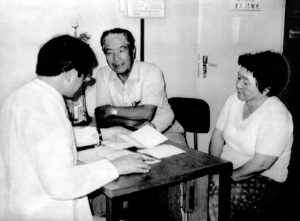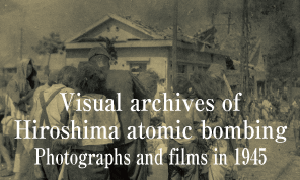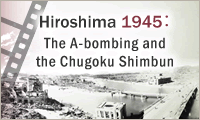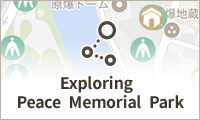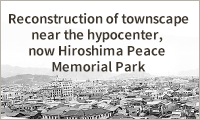Documenting Hiroshima 80 years after A-bombing: In October 1985, A-bomb survivors in South America receive health consultation
May 10, 2025
Group of doctors dispatched for first time
by Minami Yamashita, Staff Writer
In October 1985, the Japanese government and the prefectures of Hiroshima and Nagasaki dispatched a team of doctors for atomic bomb survivors living in South America. The team of eight, including three physicians who provided health consultations and advice on medical treatment, traveled to Brazil, Paraguay and Argentina for two weeks.
In 1984, the year before, the Association of A-bomb Survivors in Brazil (later, the Peace Association of Brazilian A-bomb Survivors; now dissolved) was founded. That same year, Takashi Morita (died in 2024 at the age of 100), chairman of the association and a survivor of the Hiroshima bombing, and his wife Ayako (died in 2009 at the age of 84) temporarily returned to Japan and asked the Ministry of Health and Welfare, Hiroshima Prefecture, and Hiroshima City to “extend a hand in relief.”
At the time, 27 of the association’s 97 members were certified as atomic bomb survivors. Applications for the Atomic Bomb Survivor’s Certificate had to be submitted in Japan. In addition, certificate holders lost their entitlements to receive medical expenses and various allowances, such as a health care allowance, once they left Japan due to Directive No. 402 issued by the Welfare Ministry.
Consultations in Japanese
Mr. Morita asked the Welfare Ministry, which continued to turn its back on survivors living abroad, to dispatch doctors from Japan, saying he wanted “at least” that. Yasuko Saito, 77, Mr. Morita’s oldest daughter who lives in Sao Paulo, has supported the survivors since the association’s inception. Looking back, she said: “We were grateful to be able to consult with a medical specialist in Japanese.”
According to her, many atomic bomb survivors did not seek medical attention until their symptoms worsened due to a lack of social understanding of them in their local communities and a language barrier. In the 1950s and 1960s, people in the prime of their working lives emigrated overseas. However, concerns about their health increased with age in the 1980s.
A total of 133 people from three countries attended the first health consultation, with some expressing feelings of “relief.” However, Tetsuo Monzen, the late assistant director of the Hiroshima Prefectural Hospital and one of the doctors dispatched to South America, was concerned about the lack of medical devices in public hospitals and the rising medical costs due to inflation. Dr. Monzen, who was also a member of the health checkup program for survivors in North America started by the Hiroshima Prefectural Medical Association and others in 1977, pointed out the “poverty” of medical circumstances in those countries, saying that its level was “comparable to that of Japan before the war.”
Dispatch of the medical teams to South America began in 1986 and has continued every other year since then. In some cases, however, the consultation did not lead to treatment due to the participants’ economic situation. In 1988, the association conducted a survey to learn about the living conditions of survivors in five South American countries.
No allowance provided to the survivors
Of the 188 people surveyed, 139 responded. None of the respondents were receiving allowances for atomic bomb survivors. “I think atomic bomb survivors in Japan are lucky. I need treatment, but I drink boiled herbs instead because I cannot afford medication.”; “Initially, as an emigrant, I had to work tirelessly to achieve economic stability, often pushing myself too hard. As a result, I developed various diseases after the age of 45.” People described their dire circumstances in the free text field.
“All we wanted was help from the Japanese government when we fell ill. It was our only desire at that time,” Ms. Saito said. In 1990, the Hiroshima Prefectural Medical Association began offering assistance to survivors living overseas who wanted to travel to Japan for medical care. However, only several people were eligible each year, and they had to be fit enough to travel halfway around the world to Japan.
In an attempt to fundamentally resolve the issue, Mr. Morita filed a lawsuit in the Hiroshima District Court against the Japanese government in 2002, seeking health care allowances for atomic bomb survivors living overseas. Jointly with the survivors in South Korea and the United States, he paved the way for aid from the government through the battle in court.
(Originally published on May 10, 2025)

